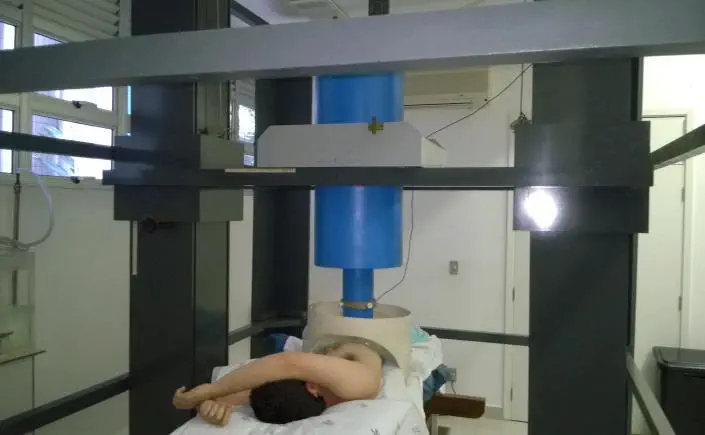Magnetic Sensors

Magnetic sensors are the methods used, by which biomagnetism occurs. Within the University of São Paulo, in Ribeirão Preto, there are:
SQUID (Superconducting Quantum Interference Device)
It is a highly sensitive type of magnetometer that can detect minute changes in magnetic fields, making it a tool in many areas of science and technology.
It works based on the Josephson effect that is a physical perspective that is manifested by the appearance of an electrical current that flows through two weakly interconnected superconductors, separated only by a very thin insulating barrier, there is also the quantization of flow in a superconducting ring and the Meissner effect, which causes the magnetic field inside the superconducting material is zero.
Inside the Squid, this magnetic current will increase until it reaches its peak, with the increase in the magnetic field, and will subsequently decrease to its minimum, with the decrease in the field. This process will be repeated periodically.
OPM (Optically Pumped Magnetometers)
Optical Pumping Magnetometers are a new technology that has great capacity to carry out magnetic measurements of signals from our body. In general, OPM is being used in research, to determine whether it is the most viable method to be used as a basis for Magnetocardiography diagnoses, both in people and in fetuses.
For a long time, Superconducting Quantum Interference Devices (SQUIDs) have been the main sensors in biomagnetic measurements, due to their high bandwidth, sensitivity and dynamic range from nanoTesla (nT) to femtoTesla (fT). However, the use of SQUIDs is limited by the necessary cryogenic cooling with liquid helium, due to cost, operation logistics and fixed geometry of the sensors (Seymour et al., 2022). The development of Optical Pumped Magnetometers (OPMs) changed this situation, offering the same sensitivity as SQUIDs, but operating at room temperature, eliminating the need for cryogenic cooling (Kominis et al., 2003; Shah & Wakai, 2013).
Furthermore, since magnetic shields are necessary to isolate low-intensity cardiac magnetic fields from interference from other magnetic sources, the development of OPMs has allowed the use of small-sized magnetic shields, with dimensions slightly larger than the volume of the body. human, and therefore, more economically accessible.
In summary, OPMs work as follows: a laser diode to generate resonant light, a clear glass alkali vapor cell and a photodetector. The resonant light polarizes the atoms in the gas. In a near-zero magnetic field environment, if a second laser beam is applied to the cell, it will pass through the vapor cell and reach the photodetector with maximum intensity. In the presence of a magnetic field, however, the net polarization will rotate through a small angle. Then, the light from the laser beam will be partially absorbed by the atoms, and a change in the intensity of the transmitted light is measured by a photodetector (Tierney et al., 2019)
MCG (Magnetocardiography)
It is a non-invasive technique that records the magnetic fields that are produced from the electrical current of the heart, using magnetometers. The magnetic field produced by the heart is extremely weak (about 10-10 T), being much lower than the intensity of the Earth’s magnetic field (10-5 T) and the level of magnetic noise in urban areas (10-7 T). Therefore, it is very difficult to measure the cardiac magnetic field.
Opposite to other physiological study techniques, such as magnetic resonance imaging or ultrasound, MCG does not emit magnetic fields or energy, it only detects the magnetic fields intrinsically generated by the electrical activity of the heart (Malmivuo & Plonsey, 1995). Baule and McFee, in 1963, were the first to record these magnetic fields, using some copper coils in an open field. They got a wave similar to the electrocardiogram and called it a magnetocardiogram.
MCG has been used in our group’s research for studies, with adult patients of both sexes and also fMCG, with pregnant women from the twelfth week of pregnancy.
Magnetocardiography is a safe method for diagnosing cardiac arrhythmias in adults and fetuses. However, due to the high cost and complexity of SQUID equipment, its application has been limited. Recently, Optical Pumping Magnetometers have emerged as a more affordable and simplified alternative. The development of these devices made it possible to install the first OPM system inside a cylindrical shield.de mu-metal, in the Biomagnetism laboratory at the University of São Paulo in Ribeirão Preto. This marks a significant advance in Brazil and Latin America. The goal is to make GCM more accessible in hospitals and clinics, providing more accurate diagnoses and early treatments.